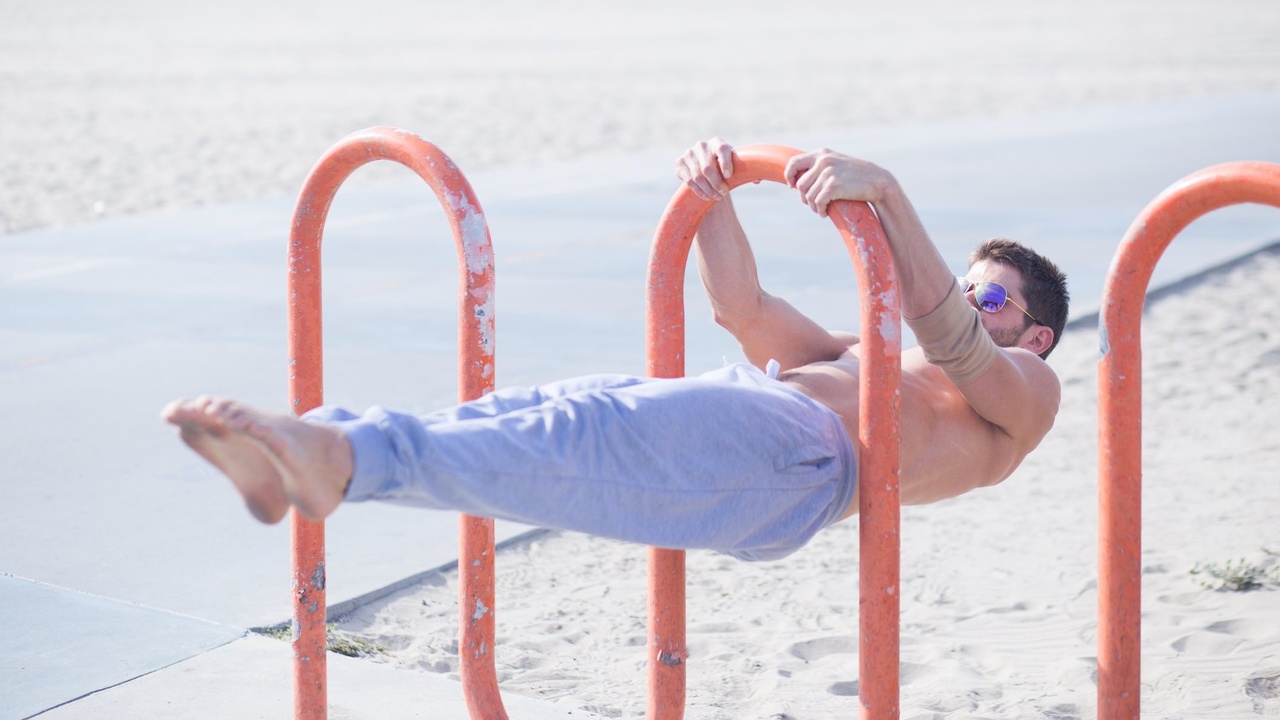Front Lever. Control. Power. Achieved: A Complete Calisthenics Guide
Front Lever. Control. Power. Achieved: A Complete Calisthenics Guide
The front lever is one of the most iconic and challenging moves in calisthenics.
It’s the move I’ve always wanted to master since I first started my calisthenics journey.
The front lever, where you hang horizontally from a bar, is a powerful display of strength, and control. While it may look simple, achieving a full front lever can take years of dedicated training and practice. This include a combination of core strength, upper body power, and mental focus.
The front lever is NOT a beginner's movement, so you should be able to perform 12-15 pull ups minimum, ideally 20, to be able to start your front lever journey. It is also a movement that can take a long time to master.
It took me 3 years to hold a clean front lever for 3 seconds. And that is where 3 seconds feel like 3 years.
I am now 44 and can still hold it, for a bit longer (5-10 seconds), 10 years later. I am still working on it. Less often but alwa...
20 Calisthenics Exercises To Get Better At Front Lever!

20 Calisthenics Exercises To Get Better At Front Lever!
If you want to build the strongest abs and back you've ever had, the front lever is for you!
It requires a lot of work and practice to build up to the full front lever hold itself.
So here are 20 calisthenics exercises that will help you start and/or improve your front lever:
- Tuck front lever
- Advanced tuck/lay front lever
- Banded front lever (band under the hips and band under your feet. Decrease the size of the band to increase difficulty over time).
- Full Negative front levers (top -> down)
- Full Front lever raises (down -> up)
- Straddle Negative front levers (top -> down)
- Straddle Front lever raises (down -> up)
- Full to straddle high holds
- Full to straddle low holds
- Dragon Flags
- Deadhangs
- Toes to bar
- Hollow body holds
- Pull ups
- High pull ups
- L-sit
- Reverse L-sit
- Reverse L-sit rows
- Leg flutters
- Superman planks and/or ab roller
These exercises will allow you to work on core and back...
My Favorite Calisthenics Move
My Favorite Calisthenics Move
I remember seeing "Hannibal For King" around 2008, on YouTube.
He went from doing a dip to levitating, between two benches.
That was a Front Lever.
The man was floating.
It was beast mode and smooth at the same time.
I had never seen anything like that.
And it became my all time favorite calisthenics move.
For several reasons.
Yes there are other very cool moves in calisthenics.
But this one is unique.
Because it is:
- The simplest of all "hard" moves
- Deceivingly easy looking
- Extremely hard to hold
- Very minimalistic
- Joints and shoulders friendly
- Gives you bulletproof abs
- Carries on to other movements
- A mindset challenge
Here are a few tips when you train your front lever:
- Always start practicing the hardest version that you can hold.
- Then add easier variations to your sets to extend your time under tension.
- If you are advanced you can use the variation I use in the video.
- If you are starting your front lever journey, use th ...
How To Improve Your Front Lever
How To Improve Your Front Lever
The Front lever is one of the hardest move in calisthenics.
It requires a very strong back and core, as well as good shoulder and hip mobility.
- One of the best way to train it is the advanced tuck hold.
Here are some pointers:
- Squeeze your knees together
- Point your toes
- Don't let your hips fall
- "Push" the bar away from you to keep it at your hip level
- Breathe slow and steady
The goal is to hold that position for as long as you can and repeat for 5 sets.
- You can also combine the advanced tuck with full assisted holds using a resistance band. Wrap the band around the bar and place it around your feet and/or hips.
Go for 5-10 sets of max holds with the band.
- You can also practice negative front lever reps where you come from the top hold then descend and try to hold when your body becomes parallel to the ground.
Here again go for 5-10 negative repetitions.
- Lastly spend some time training your dragon flag as a great accessory...
3 Calisthenics Exercises To Get Better At Front Lever

3 Calisthenics Exercises To Get Better At Front Lever!
Static holds are some of the hardest things to achieve in calisthenics.
They are very different from the classic repetitions we do with regular movements such as pull ups or push ups. The obvious difference is that one is an isometric exercise while repetitions are dynamic exercises.
But there is much more to it.
There are 2 main reasons why static holds are more demanding than traditional movements:
They challenge your nervous system.
Your body needs to learn how to cope with a continuous, strenuous effort. Indeed, when doing reps, your body is used to taking partial "breaks" between your repetitions, even if it does not feel like rest! So the key is to calm your nerves down and learn to breathe optimally through the static hold.
It addresses your weak links.
Static holds will automatically highlight any weakness in your body very quickly. When doing reps there is always a slight compensation or swing in one way or ano...

